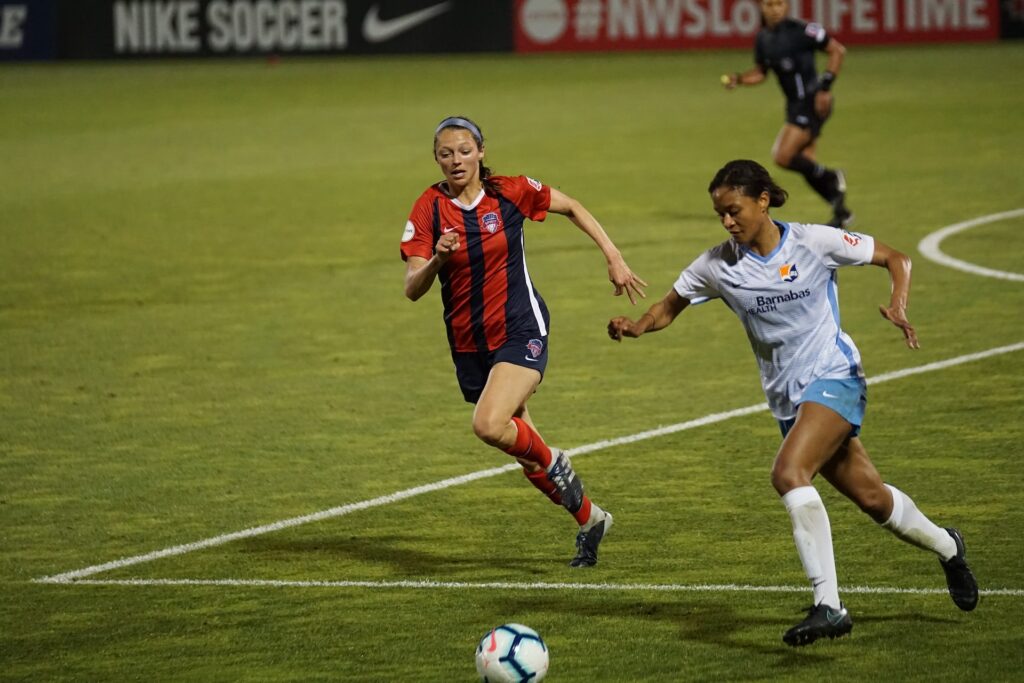Table of Contents
- So, what is a sweeper in soccer?
- Soccer sweeper position explained
- What is the role of a sweeper in soccer?
- How to be a good sweeper (Five Attributes)
- The best sweeper in soccer?
- Recap: What is a sweeper in soccer?
For decades, the sweeper in soccer was a much-utilized position at the elite level of the game.
Those numbers have dwindled as time goes on as coaches think of contemporary ways to set their teams up.
The sweeper role might be viewed as outdated by some, but can still be beneficial for your side.
How does it work? Do you require versatility to perform the sweeper position?
The story behind the role is an interesting one with numerous tweaks throughout the decades we’ve seen it in action.
So, what is a sweeper in soccer?
The sweeper is a player used primarily behind the defensive line to clear away any danger that penetrates the defense.
Sweepers are viewed as safety nets, used as an additional barrier for the opposition to break down and frustrate attackers.
Sometimes attackers will find creative ways to break down the opposition and find room behind the main defensive line. It’s then the job of the sweeper to thwart them in their tracks as the last resort before they reach the goal.
Often sweepers will initiate the passing moves that are started. Whether it’s a long ball, a pass played out wide, or simply laying it off to a perceived more technically creative player, sweepers end opposition attacks and frequently begin their own team’s moves.
Soccer sweeper position explained
Sweepers are tasked with neutralizing any danger that the defensive line has not been able to handle.
Whether loose or errant balls stray into the sweeper’s zone or an oncoming player is dribbling toward a threatening area, sweepers protect the people in front of them through an extra line of security.
Think of sweepers as a mobile defender who patrols behind the defensive line rather than sticking somewhere zonally as many other defenders and midfielders are instructed.Karl Rappan is the coach who’s often credited with inventing sweepers. His Servette side from the 1930s paved the way for what we now know as the sweeper.
The Austrian felt his side lacked some of the technical skills required to dominate games in a traditional sense, so his idea was to strengthen his side’s defensive solidity through extra bodies that would cover exposed areas.
Italian soccer has seen the use of a sweeper consistently since the end of the Second World War, and Giuseppe Viani is the man who popularized the role in Italy. His Salernitana side successfully implemented a system unseen by most in Italy and inspired future European Cup-winning coaches at AC Milan and Inter Milan to follow suit.
The role has been adapted and revolutionized over the years, and perhaps no player has changed the position as we know it as much as Franz Beckenbauer.
His famed ability to mop up danger and join his sides in attacking forays is still revered to this day. He combined what we knew as a sweeper with what became the Libero role, advancing forward to contribute to the attacking threat.
In later years, Franco Baresi, who Paolo Maldini once described as possessing the tools of a midfielder, would become renowned for his sweeping ability in a dominant AC Milan side. Yes, he had the skills to harm opponents, but his physical prowess was to be feared.
Many sides these days aim to quell the threat posed upon them in midfield. This, combined with offside traps that are set in strict lines of defense, has made the sweeper position somewhat redundant in modern soccer.
What is the role of a sweeper in soccer?

The primary role of a sweeper is to sniff out and clear away danger that threatens their goal.
The modern role of sweeping doesn’t necessarily restrict players to perform this duty behind the line of defense; many midfielders now sit deep, behind where the other central midfielders are located, to cut out danger before the attack can even reach the defense.
The same tasks often apply to those midfield sweepers, often referred to simply as defensive midfielders or sometimes as anchormen if they are heavily involved in the game’s passing play, so there might be more emphasis on midfielders starting attacks.
How to be a good sweeper (Five Attributes)
As is the case with all soccer positions, possessing certain attributes will help you become an effective sweeper in soccer, including the following:
- Anticipation – being proactive instead of just reactive is an essential component to performing the sweeper role successfully. Sensing where the danger could occur and being prepared for when it happens puts you one step ahead of your rivals.
- Stamina – typically, coaches will only line up with one sweeper should they choose to adopt this role within their side. Therefore, you’re responsible for an entire area of the field on your own. Increase your fitness levels to give you the best chance of succeeding in the sweeper role.
- Strength – any defensive duty requires some form of physical strength or aggression. You need to combat your opponents with requisite physicality so that being a sweeper is a concern for attacking players.
- Communication – leading and instructing is a crucial aspect of the sweeper position. You need to be in constant communication with your backline so that attackers can’t easily beat your offside traps and deceive you. Sweepers get a different view of the field from their teammates because everything is usually in front of them, which has its benefits.
- Positional awareness – knowing when your teammates are out of position, and your side has the chance to be exposed is crucial to negating any threat. Maintaining the optimal position on the field makes everybody’s job easier.
The best sweeper in soccer?
Modern coaches don’t appear to employ sweepers as much as they used to, at least in the traditional sense of the position.
You will often hear certain goalkeepers referred to as “sweeper keepers”, a term for goalkeepers who eliminate the opponent’s threat by coming out of their area to clear the ball away.
Historically, West German hero Franz Beckenbauer is widely regarded as the best sweeper the game has ever seen for many reasons.
His relentless energy and eye for sniffing out danger were viewed as elite capabilities he possessed to master the position.
Sweepers existed before ‘Der Kaiser’, but his legendary ability to advance from deep and start his team’s attacking moves were considered revolutionary at the time and cemented his status as an all-time great in soccer folklore.
Franco Baresi is often involved in the discussion for the game’s best sweeper of all time too.
Recap: What is a sweeper in soccer?
The days of the sweeper role being popularly used might be gone, but the role has influenced many of the defensive structures and skills we see in the game today.
Whether the sweeper role makes a renaissance in the game remains to be seen, but the position has created legends of the sport who’ll be remembered forever.

